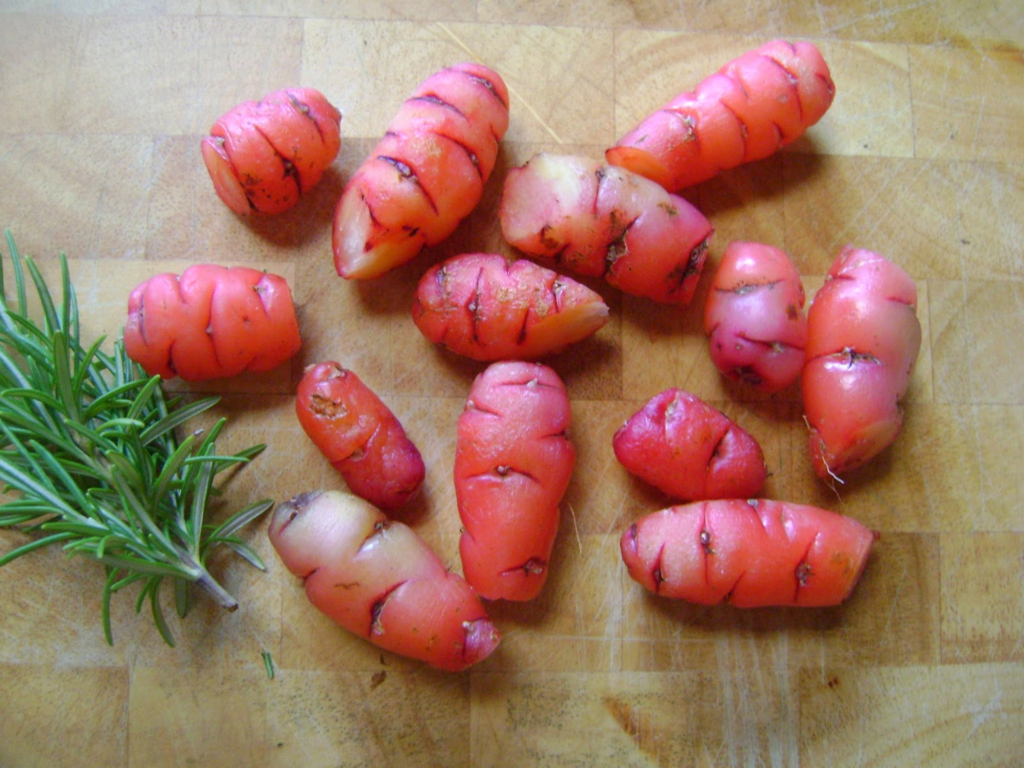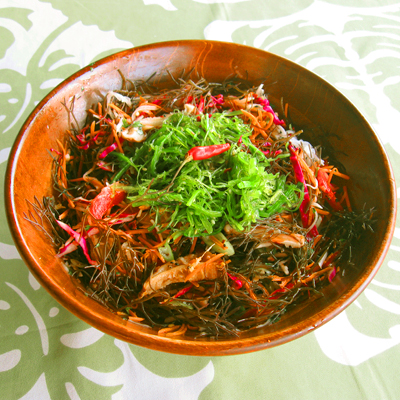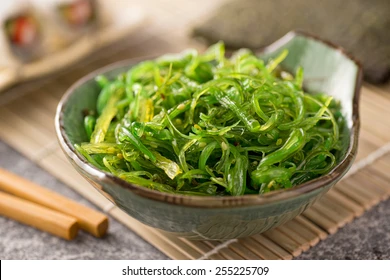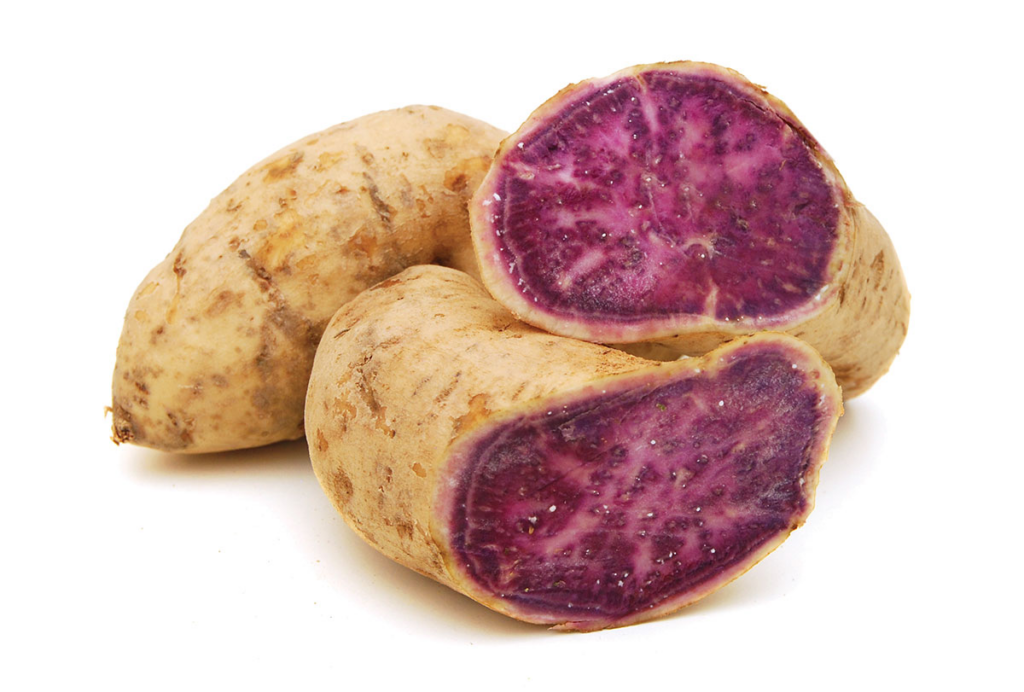Are you curious to discover colorful and nutritious vegetables that begin with the letter “O”? From vibrant orange options to unique leafy greens, “O” vegetables are often overlooked but incredibly delicious and beneficial. Join me as we explore some fascinating and tasty vegetables that will add a new twist to your culinary adventures!
1. Oca

Oca is a colorful tuber from South America known for its tangy flavor. It adds a unique taste to many dishes and is versatile in cooking.
Nutritional Benefits: About 82 calories per 100g, high in vitamin C, potassium, fiber, and antioxidants that help reduce inflammation.
How to Eat or Use It: Great for roasting, boiling, or adding to stews. It can also be sliced and dried for snacks.
2. Ogo

Ogo is a type of edible seaweed that is popular in many coastal cuisines. It has a chewy texture and salty flavor.
Nutritional Benefits: Approximately 45 calories per 100g, rich in iodine, vitamins A and C, calcium, and antioxidants supporting thyroid health.
How to Eat or Use It: Usually eaten fresh in salads, added to soups, or used as a garnish.
Diet Compatibility: Suitable for low-calorie and keto diets. Pair with sesame oil or soy sauce for extra flavor.
3. Ogonori

Ogonori is a red algae used as a vegetable, often in Asian cuisines. It has a delicate, slightly salty taste and a slimy texture.
Nutritional Benefits: About 50 calories per 100g, good source of iodine, calcium, vitamins A and B, and antioxidants that help reduce inflammation.
How to Eat or Use It: Usually added to soups, salads, or used as a garnish. Often dried and rehydrated before cooking.
4. Oil Palm
The oil palm plant produces oil, but some parts like the fruit pulp are used as vegetables in certain regions. It has a mild flavor.
Nutritional Benefits: Variable calories based on the part used, rich in antioxidant vitamin E and healthy fats.
How to Eat or Use It: Typically processed into oil, but in some places, the fresh parts are cooked or eaten as vegetable dishes.
5. Okinawan Sweet Potato

This purple-fleshed sweet potato is cherished for its vibrant color and sweet flavor. It’s nutritious and versatile.
Nutritional Benefits: Around 130 calories per 100g, high in vitamin A, C, manganese, fiber, and antioxidants that support eye health.
How to Eat or Use It: Can be baked, boiled, mashed, or added to desserts and smoothies.
Diet Compatibility: Low in calories, suitable for gluten-free and vegetarian diets. Pairs well with coconut or yogurt.
6. Okra

Okra is a green vegetable valued for its mucilaginous texture, often used in soups, stews, and salads. It has a mild, slightly grassy flavor.
Nutritional Benefits: About 33 calories per 100g, rich in vitamins C and K, folate, fiber, and antioxidants that reduce inflammation.
How to Eat or Use It: Best used in gumbo, fried, pickled, or added to soups.
Diet Compatibility: Keto-friendly, low-calorie. Works well with garlic and tomatoes.
7. Olida

Olida is an Australian native plant with edible parts, traditionally used by Indigenous Australians. It has a unique flavor and texture.
Nutritional Benefits: Precise data varies, but it provides vitamins, minerals, and antioxidants beneficial for health.
How to Eat or Use It: Usually cooked or added to traditional dishes, depending on the edible part used.
8. Onion
Onions are a universal vegetable known for their strong aroma and flavor. They form the base of many dishes around the world.
Nutritional Benefits: About 40 calories per 100g, high in vitamin C, B6, manganese, and antioxidants that support immune health and reduce inflammation.
How to Eat or Use It: Used raw in salads, cooked in virtually every savory dish, caramelized, or sliced for garnishing.
Diet Compatibility: Suitable for low-calorie diets, pairs well with herbs like thyme or parsley.
9. Orach

Orach, also known as mountain spinach, is a leafy vegetable with a slightly salty taste. It thrives in cool climates and is rich in nutrients.
Nutritional Benefits: About 23 calories per 100g, high in calcium, vitamin C, and antioxidants that promote healthy bones and reduce inflammation.
How to Eat or Use It: Best in salads, sautéed, or added to soups and stir-fries.
Diet Compatibility: Low-calorie and keto-friendly. Pairs well with garlic and lemon in dishes.

Jean Smith is a fitness enthusiast and blogger who focuses on fitness and a healthy lifestyle. She is passionate about assisting people in living healthier lifestyles and is constantly on the lookout for new and creative methods to stay fit and healthy. Her articles are excellent resources for anyone interested in improving their health and fitness.
